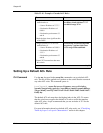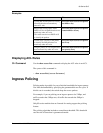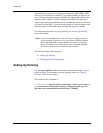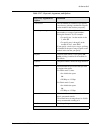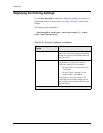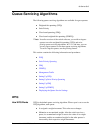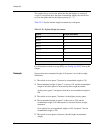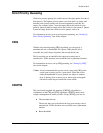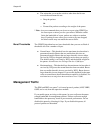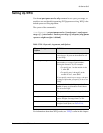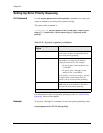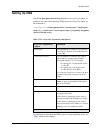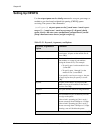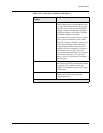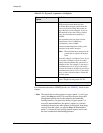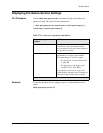
25-36 User Guide for the Avaya P580 and P882 Multiservice Switches, v6.1
Chapter 25
■ The action that you want the switch to take when the bit rate
exceeds the maximum bit rate.
— Drop the packets
Or
— Forward the packets according to the weight of the queue
* Note: Avaya recommends that you do not set a port using CBWFQ as
the source port or mirror port for a port mirror. When the switch
limits the bandwidth of a port, packets are subject to random
drop. If packets from a source port or mirror port are dropped,
the mirror traffic may not match the source traffic.
Burst Thresholds The CBWFQ algorithm has two burst thresholds that you can set. Both of
thresholds are set in a number of bytes.
■ Normal burst—This threshold sets the maximum size burst that is
guaranteed transfer. Bursts that are smaller than this size are
guaranteed transfer. Bursts that are larger than this size are either
serviced by WFQ or dropped (whichever action that you specify).
The default setting is servicing by WFQ and the default weight for
the queues.
Normal burst size can range from 0 to 15,000 bytes.
■ Maximum burst—This threshold sets the maximum size burst that is
serviced by WFQ once the normal burst has been exceeded. Bursts
that are smaller than this size are serviced by WFQ. Bursts that are
larger than this size are dropped. If you set this threshold to the same
value as normal burst, the maximum burst capability is disabled.
The
maximum burst can range from the normal burst size to 15,000.
Management Traffic
The P580 and P882 use queue 7 to forward protocol packets (ARP, VRRP,
OSPF, and so on) from the supervisor module.
If you enable queue servicing on this queue, be sure to allocate the queue
enough bandwidth for management packets. Failure to allocate enough
bandwidth to the queue may result in poor network performance. Do not
disable this queue by allocating it 0 bps. If you disable this queue, all
protocol packets are discarded.



